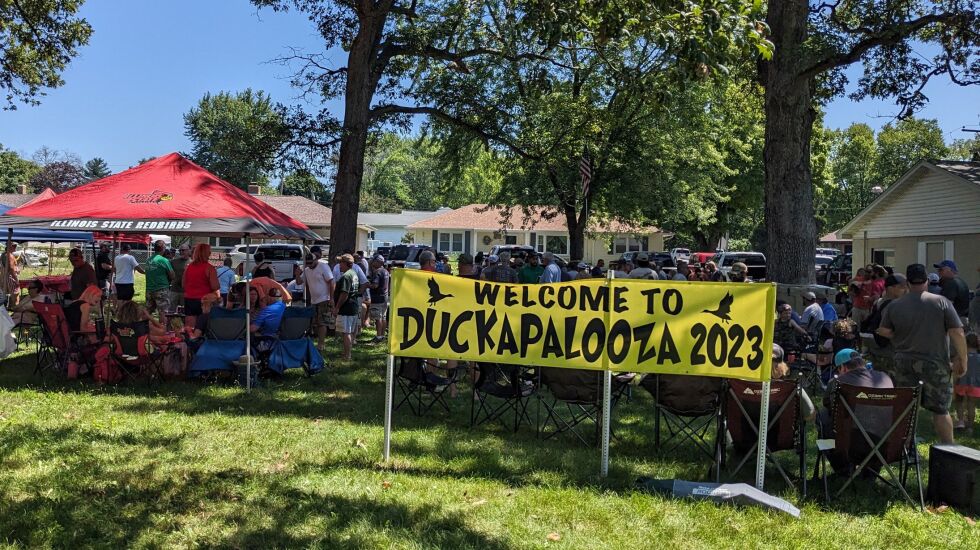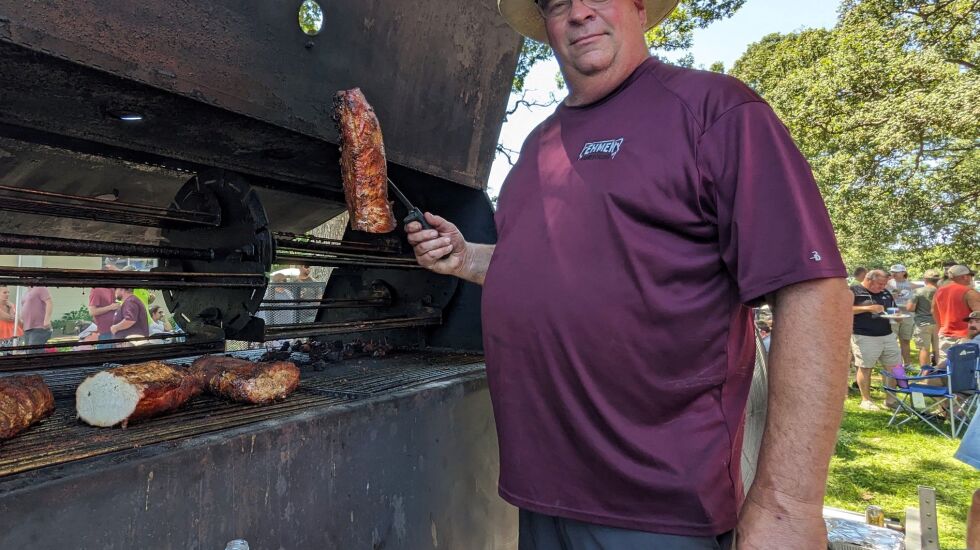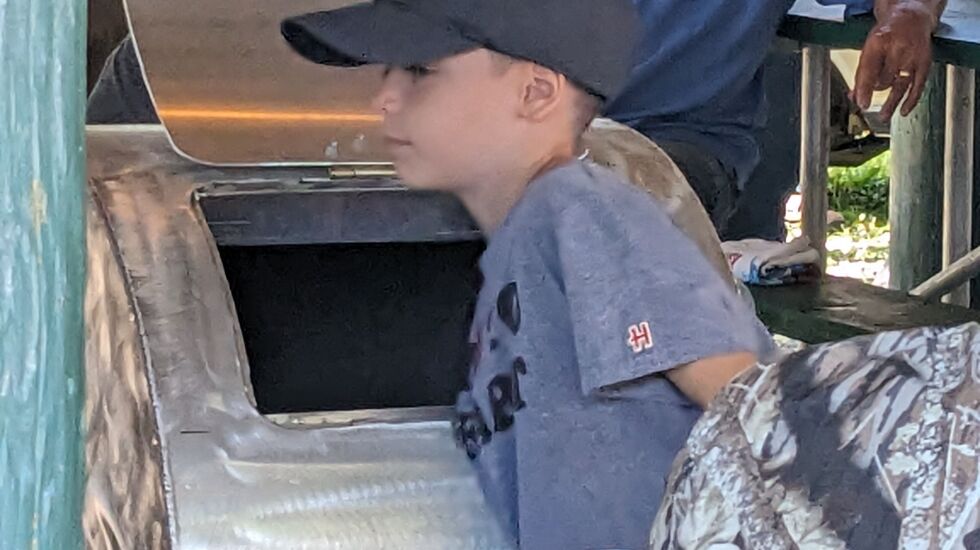
LACON, Ill.—Dusty Culjan was dealing with kids and talking with a buddy when I bumped into him Sunday.
That’s fits at a waterfowl blind draw, the great social event of the summer across Illinois outdoors.

“I’m 0-for-35 in drawing a blind,” he said. “My dad started taking me when I was two.”
We were at the draw for Woodford State Fish and Wildlife Area held at Johnson’s Grove Park in Lacon. His dad, the late Dominic “Big Knobs” Culjan, was an Illinois River guide and the best advertisement ever for the river.
Culjan, who lives in Ottawa, was one of more than 200 inside the yellow tape for the group, organized for 22 years by Bob “Bubba” Landis, called Duckapalooza 2023.
Culjan explained that if you were in the group and drew a blind, you partnered with one of the main group. The advantages included hunting with somebody experienced at the site and somebody who had a mud boat or an airboat to get round the shallow water as the river fills in.
“If you get lucky, you get to go out with one of them,” said Culjan, who considers Woodford SFWA one of Illinois’ best public waterfowl spots.
He pointed me toward Danny Ehmen, standing by his whole-hog rotisserie.
“I’m just a farmer from Champaign-Urbana,” Ehmen said.
I sense it is a labor of love as much as anything. He’s drawn a blind twice in the last 22 years.
“It’s more of a reunion than anything else,” he said.

To feed the crowd inside of Duckapalooza, he said there was 110 pounds of pork loin, 90 pounds of baby-back ribs, 70 pounds of crappie, deep fried in fryers in another area, sides of potato salad and coleslaw, then sundry desserts.
Joe Cadegiani worked the mic for Duckapalooza.
As Landis rushed around taking care of things, he said over his shoulder, “Actually, it is more fun than anything else.”

That was the sense throughout the park grounds, where dozens of smaller groups grilled, laid out food spreads and drinks while strategizing under wafts of fragrant smoke. National Wild Turkey Federation, Ducks Unlimited, dog clubs and others had booths with raffles and information. Dogs—mostly Labs but some dust-mop yappers, too—milled about.
I’m making my through the state’s draws—I’m nearing halfway—and this draw had the most families and kids of any so far. Kids chased each other and piled into the play area.
Mike Wefer, wildlife chief for the Illinois Department of Natural Resources, dug through paper files—in his words, “like a Jack Russell hunting through a hay barn”—to find that duck blind draws started in the 1950s.
“In 1954, the U.S Army Corps of Engineers and the Illinois Department of Conservation agreed upon a strategy for managing public recreation since the state assumed responsibility for large areas along the Illinois and Mississippi Rivers. This agreement included the following statement: `the State will manage public hunting and fishing on all areas it designates for this manner to provide equal opportunity for all who wish to participate in these forms of recreation. No individuals will be permitted to enjoy any special privileges on these hunting or fishing areas that are not afforded to the general public, and no individual or group of individuals shall require or be granted exclusive hunting and fishing rights.’ “
The draws come in late July, usually drawing at 2 p.m. Festivities start much earlier.
District wildlife biologist Sam Klimas said they were drawing for 24 blinds. He expected 800 people (that put draw chances about 1-in-33). At the peak before COVID, as many as 1,300 came to the draw.

At 2 sharp, Adrian Goede, assistant superintendent at Woodford, worked the microphone while Klimas did paperwork. As usual, kids drew the paper selections from a rotating barrel. First up was Wyatt Fritts, 8, from Cornell.

First selection went to Mike Huenefeld, of Chillicothe, who busted out, “[@#$] yeah.”
He picked blind 19, which was the consensus top pick.
In eight minutes, the 24 draws were announced. Then came 10 alternates. Nobody seemed to want blinds 15, 22 or 9 (never selected). Next is the work and expense of building or refurbishing blinds, before Klimas inspects and approves them in early October.
It was time.
Leaving, I took a scenic drive north on Route 26 along the river.








